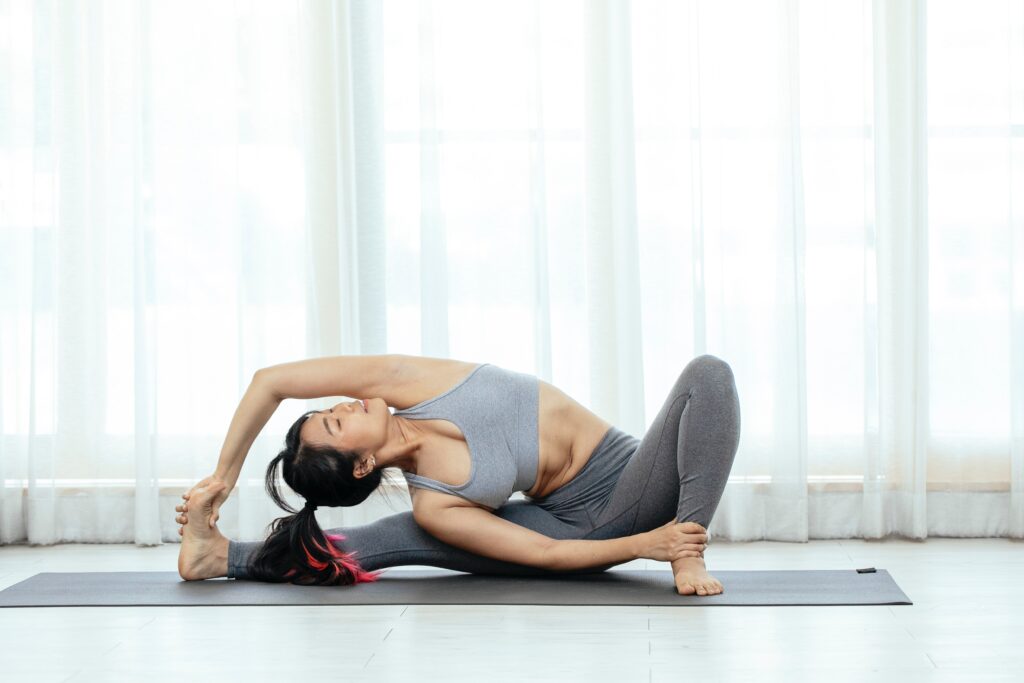Flexibility is a critical component of yoga, as it allows for the safe and effective practice of asanas, or postures, and can also contribute to overall physical and mental well-being. In this article, we will explore what flexibility is, why it is important in yoga, and how to achieve it, with a focus on scientific understanding.
What is Flexibility?
Flexibility refers to the ability of our muscles and joints to move freely and without discomfort through their full range of motion. It is affected by a variety of factors, including muscle length and elasticity, joint health, and the condition of the tissues that surround them. When we are flexible, we are better able to perform asanas safely and effectively, as well as to release tension and stress, leading to improved physical and mental well-being.
Why is Flexibility Important in Yoga?
Though yoga is a vast discipline and flexibility is not everything but it is crucial to the safe and effective practice of yoga, particularly for asanas that require us to stretch our muscles and joints to their fullest extent. Without adequate flexibility, we may struggle to achieve proper alignment in our postures, leading to discomfort, pain, and even injury. Furthermore, a lack of flexibility may cause us to overcompensate by using other parts of our body, which can create imbalances and strain in our muscles and joints.
In addition to its importance for safe and effective asana practice, flexibility can also lead to improved physical and mental well-being. Stretching our muscles and joints can release tension and reduce stress, leading to better sleep, digestion, and immune function. Additionally, deepening our flexibility through regular yoga practice may lead to increased feelings of freedom and openness in our bodies, as well as a greater sense of connection and ease in our lives.
Scientific Understanding of Flexibility
From a scientific perspective, flexibility is related to several factors, including muscle length and elasticity, joint health, and the condition of the tissues that surround them. When we stretch our muscles and joints, we create small tears in the muscle fibers, which then repair themselves and grow stronger over time. Additionally, stretching can increase the production of synovial fluid in our joints, which helps to lubricate and protect them.
However, not all stretching is equal. Dynamic stretching, which involves moving through a series of postures or movements, has been shown to be more effective at improving both flexibility and performance, particularly when performed as part of a warm-up routine. Static stretching, in which we hold a pose for an extended period, may also be effective, but may also lead to muscle fatigue and reduced performance in subsequent activities.
How to Achieve Flexibility in Yoga
Achieving greater flexibility in yoga requires consistent practice, patience, and persistence. Some strategies that can help deepen our practice and move toward greater mobility and ease in our bodies include:
1- Consistent practice: Regular, consistent practice is key to developing flexibility in yoga. Aim to practice at least 3-4 times per week, and be patient and persistent in your efforts.
2- Mindful stretching: Rather than forcing your body into postures, focus on mindful stretching, paying attention to the sensations in your body and breathing deeply into any areas of tension or discomfort.
3- Warm-up properly: Before starting your yoga practice, take some time to warm up your muscles and joints with dynamic stretches or movements, such as sun salutations or cat-cow stretches.
4- Use props: Props such as blocks, blankets, and straps can help to support your body and deepen your stretches, allowing you to achieve greater flexibility over time.
5- Work with a teacher: A knowledgeable yoga teacher can provide guidance and support in your practice, helping you to avoid injury and deepen your flexibility in a
safe and effective way.
In conclusion, flexibility is a critical component of yoga, allowing for safe and effective asana practice, as well as contributing to overall physical and mental well-being. By understanding the scientific factors that contribute to flexibility and implementing strategies to deepen our practice, we can move toward greater mobility, ease, and freedom in our bodies, and a greater sense of connection and well-being in our lives. So, let’s commit to consistent practice, mindful stretching, proper warm-up, and seeking guidance from a knowledgeable teacher to achieve the flexibility that we desire and improve our overall well-being.
We emphasize the importance of listening to your body and honoring its limitations, encouraging you to avoid pushing beyond your comfort level and causing unnecessary injury. With our expert guidance and support, you can cultivate a safe and sustainable yoga practice that promotes flexibility, mobility, and overall well-being. That’s what puts us among the Best International Yoga Schools in India.



